Abstract
Antibodies highly specific for intact pm7G (7methylguanosine-5'-mono-phosphate) were induced by immunization of rabbits with a pm7G-BSA conjugate. Since the nucleotide is six-fold more stable than m7G (7-methylguanosine) to alkali-catalyzed fission of the imidazole ring, it is a more desirable antigen for obtaining antibodies capable of binding caps on eukaryotic mRNA. UV spectra demonstrated that the nucleotide in the conjugate was predominantly the intact form. Competition radioimmunoassay showed 1) high apparent affinities for pm7G, on the order of 10(-8)M, 2) low competition by the ring-opened form of the homologous hapten (*pm7G), and by m7G, 3) little or no competition by AMP, GMP, CMP, UMP or m6A, and 4) high apparent affinities for m7GpppAm, m7GpppN6MAm, m7GpppGm, m7GpppA.
Full text
PDF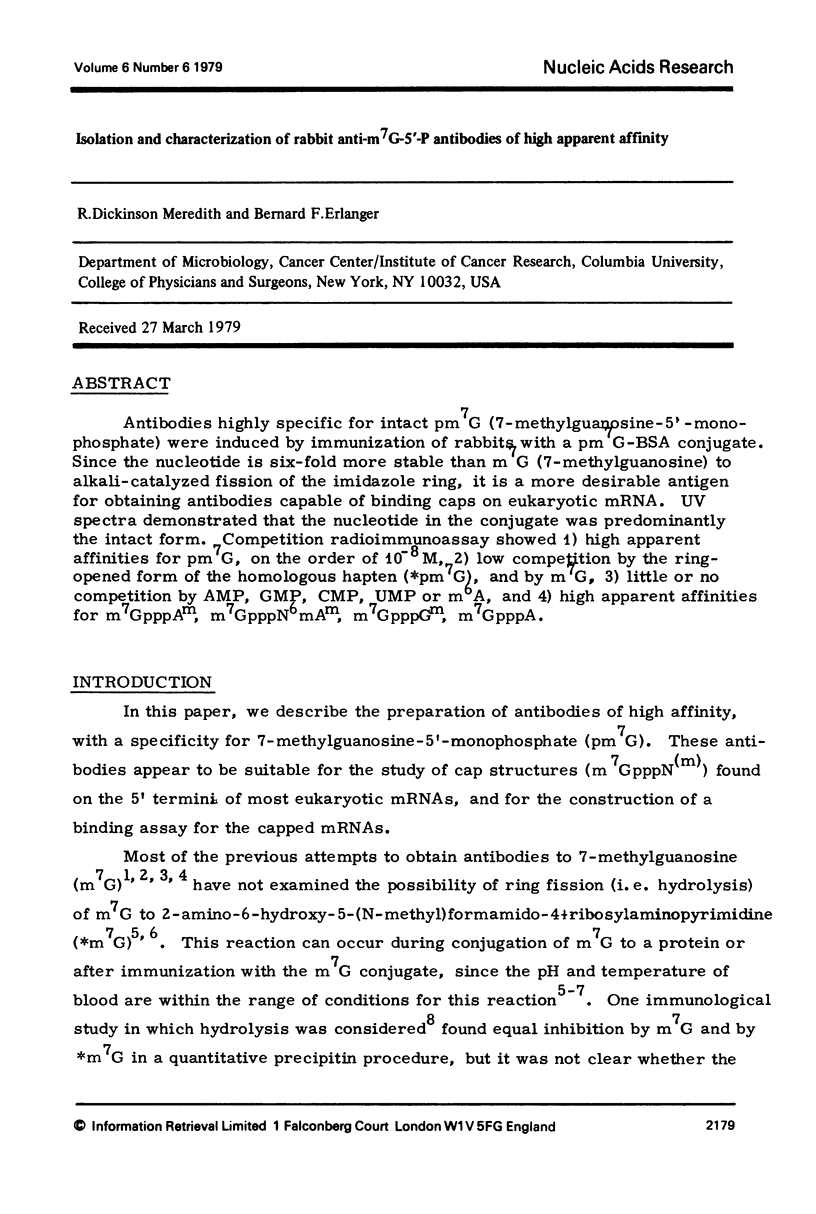
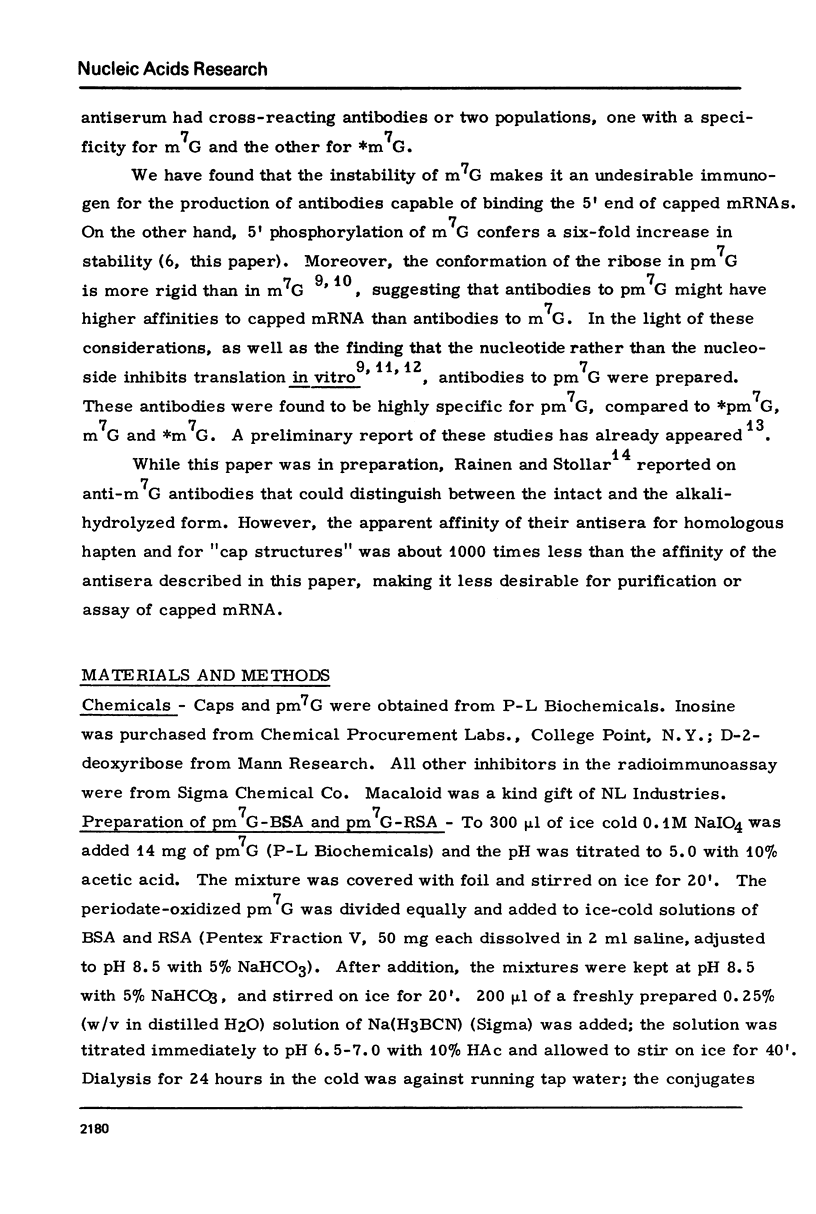
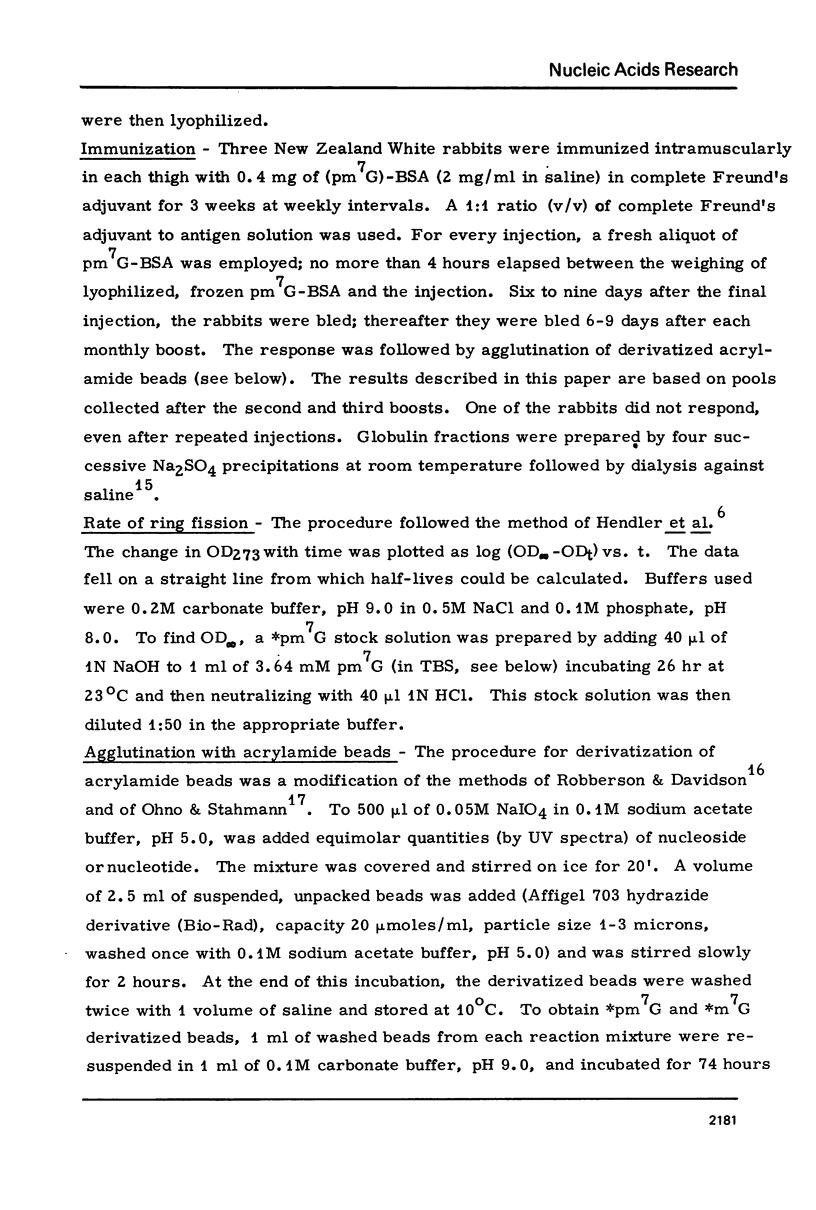
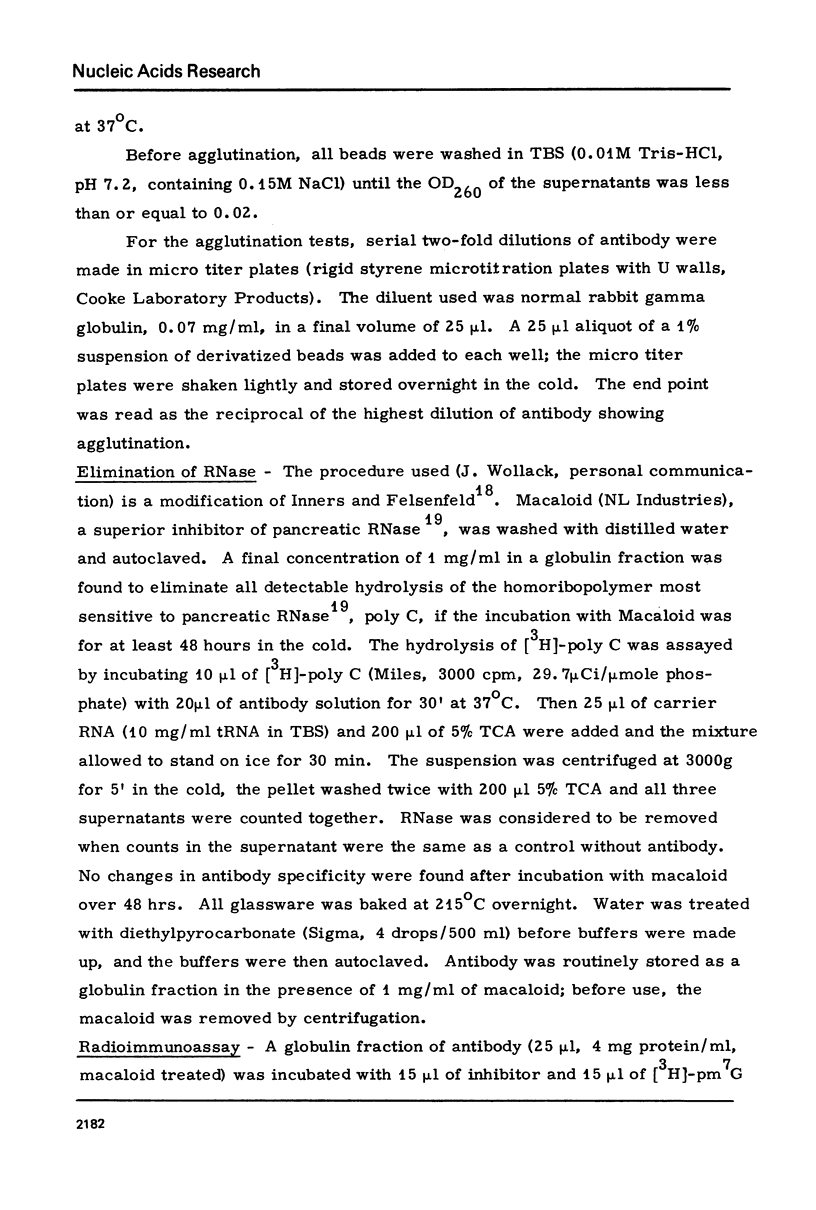

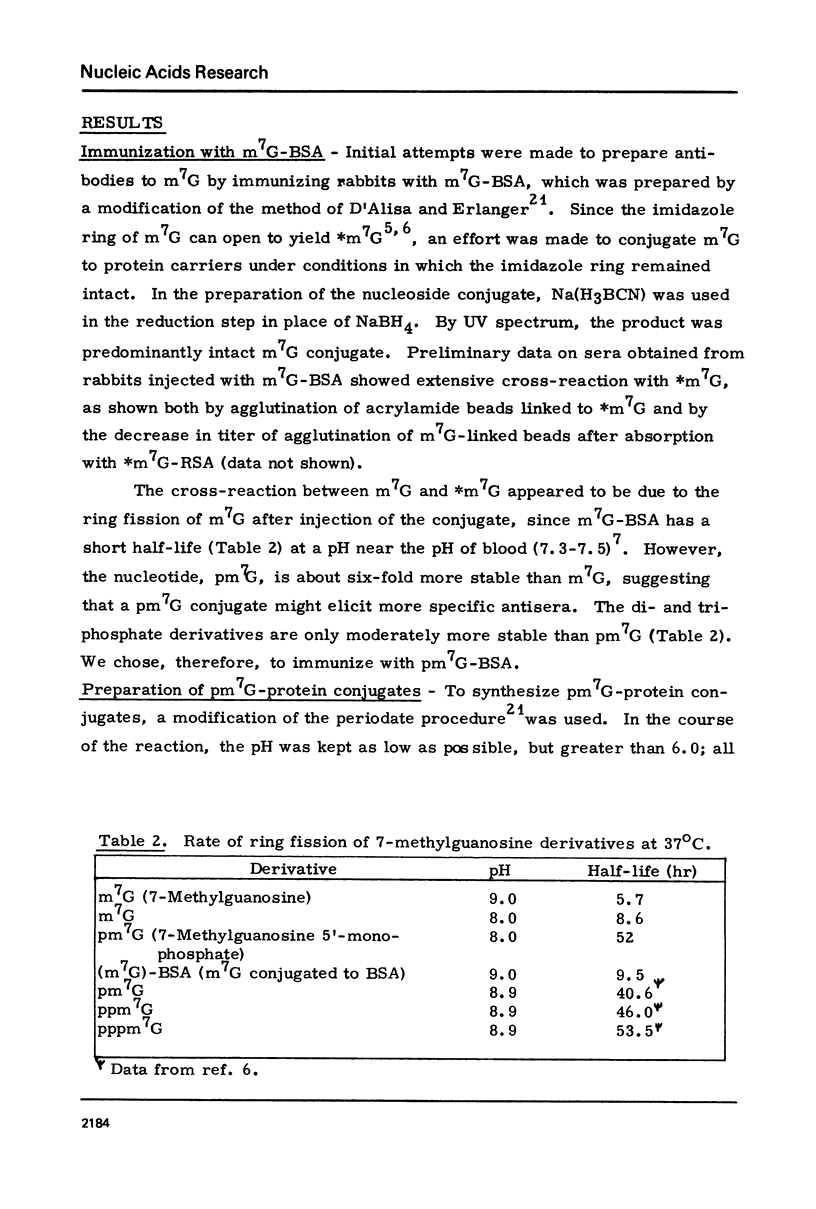
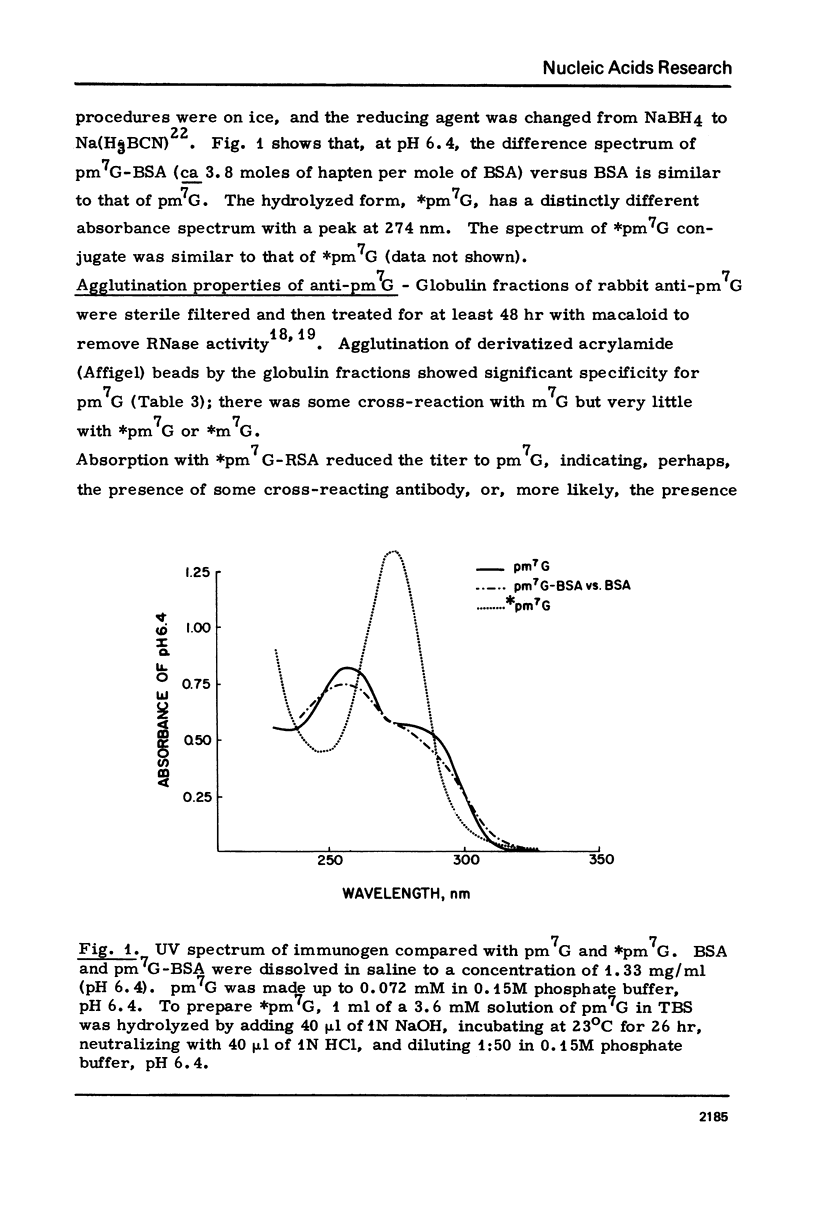

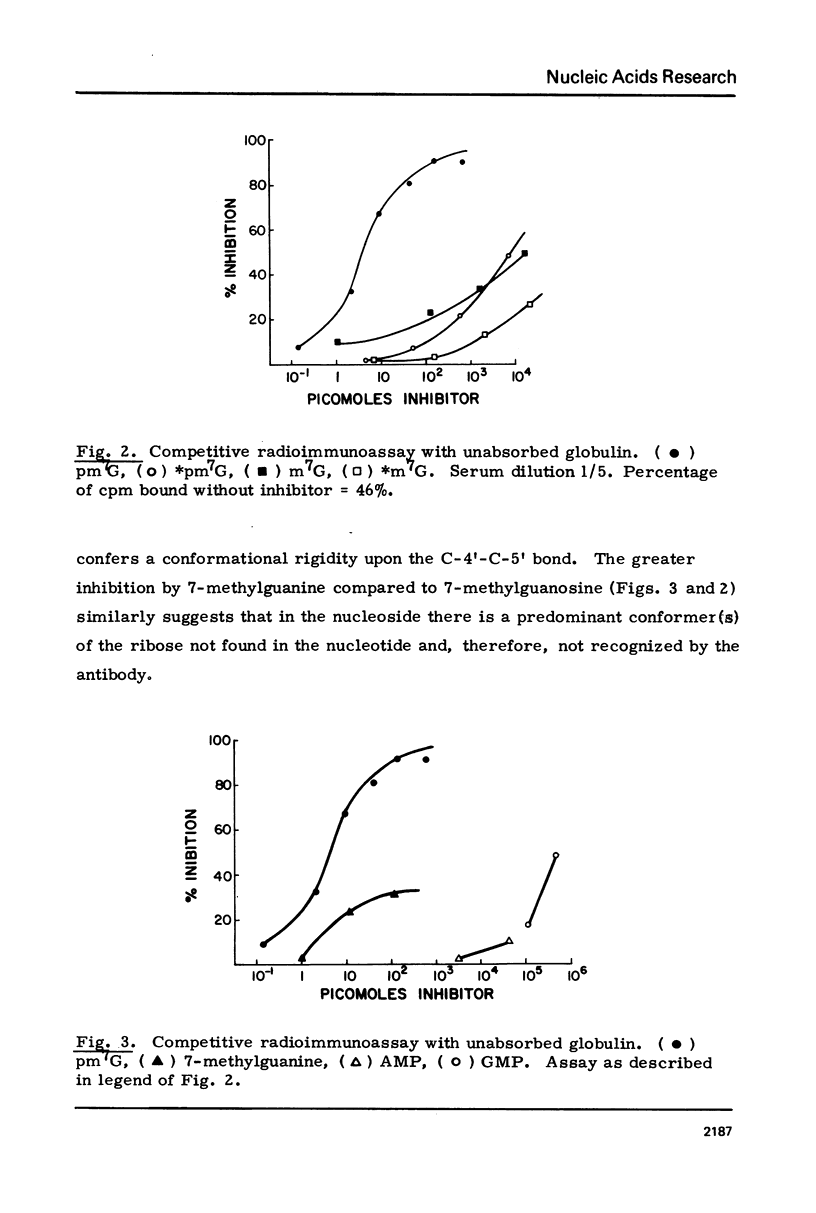

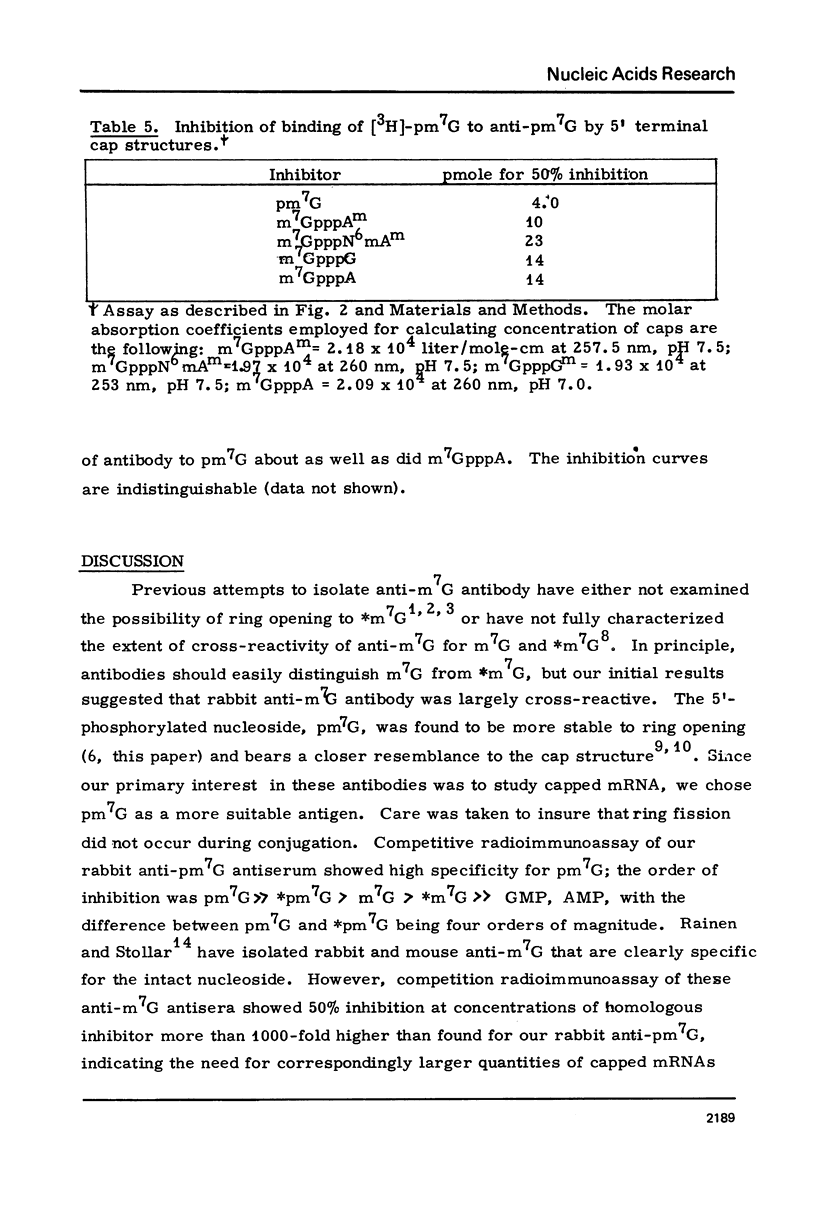
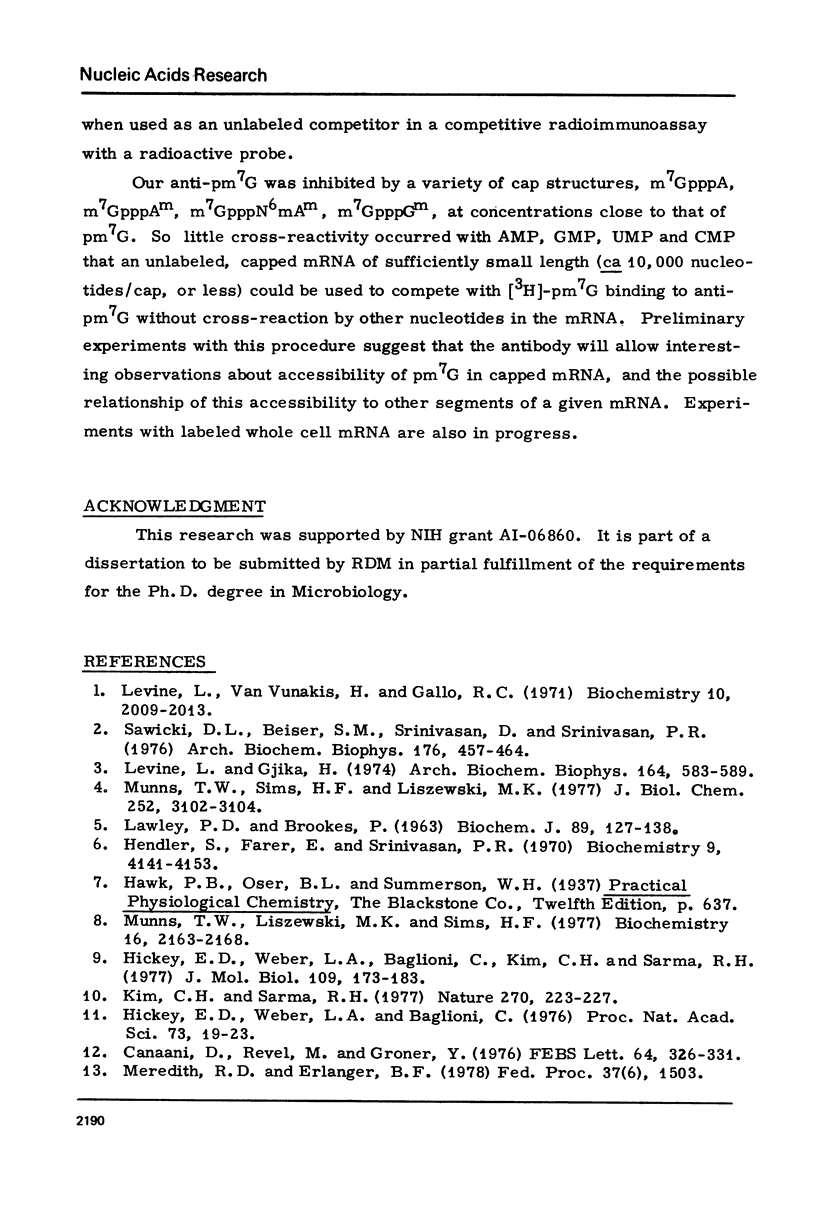
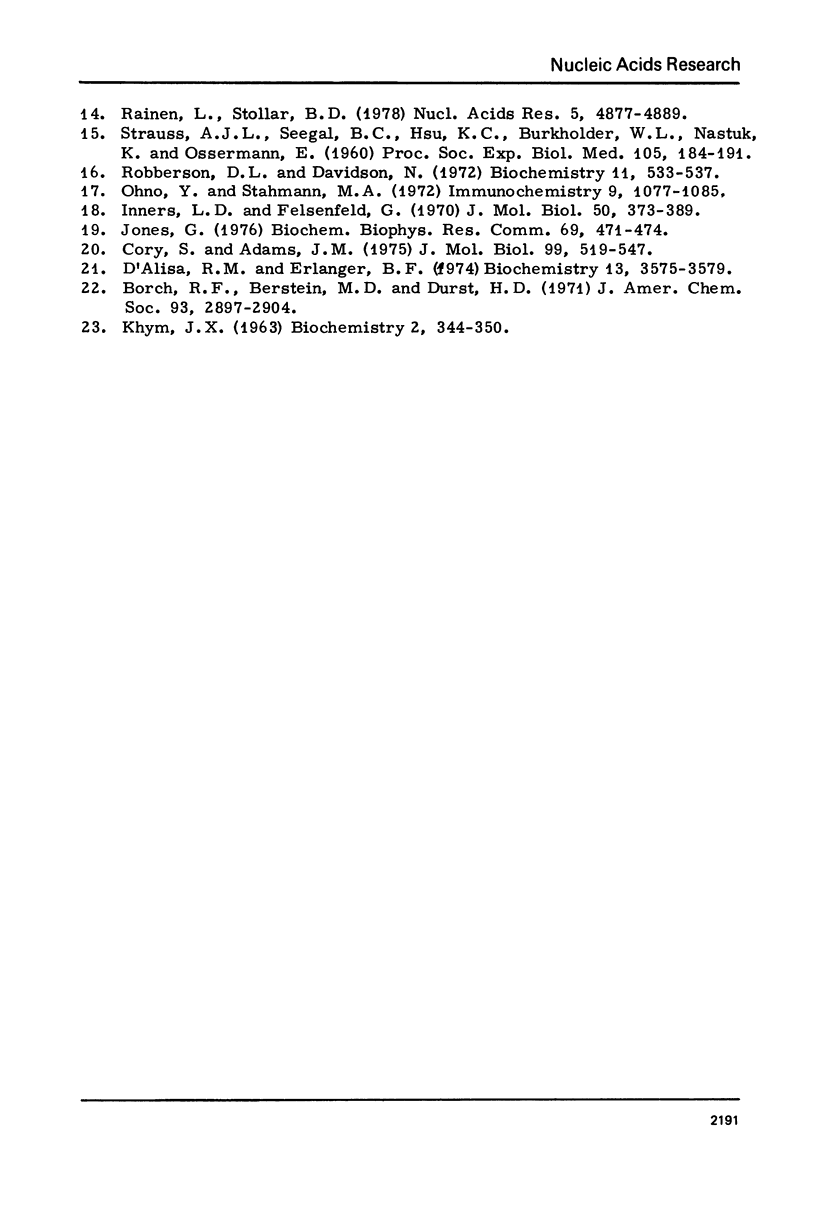
Selected References
These references are in PubMed. This may not be the complete list of references from this article.
- Canaani D., Revel M., Groner Y. Translational discrimination of 'capped' and 'non-capped' mRNAS: inhibition of a series of chemical analogs of m7GpppX. FEBS Lett. 1976 May 1;64(2):326–331. doi: 10.1016/0014-5793(76)80321-3. [DOI] [PubMed] [Google Scholar]
- Cory S., Adams J. M. The modified 5'-terminal sequences in messenger RNA of mouse myeloma cells. J Mol Biol. 1975 Dec 25;99(4):519–547. doi: 10.1016/s0022-2836(75)80170-7. [DOI] [PubMed] [Google Scholar]
- D'Alisa R. M., Erlanger B. F. Antibodies to the codons ApApAp, ApApC, and ApUpG. Biochemistry. 1974 Aug 13;13(17):3575–3579. doi: 10.1021/bi00714a027. [DOI] [PubMed] [Google Scholar]
- Hendler S., Fürer E., Srinivasan P. R. Synthesis and chemical properties of monomers and polymers containing 7-methylguanine and an investigation of their substrate or template properties for bacterial deoxyribonucleic acid or ribonucleic acid polymerases. Biochemistry. 1970 Oct 13;9(21):4141–4153. doi: 10.1021/bi00823a017. [DOI] [PubMed] [Google Scholar]
- Hickey E. D., Weber L. A., Baglioni C. Inhibition of initiation of protein synthesis by 7-methylguanosine-5'-monophosphate. Proc Natl Acad Sci U S A. 1976 Jan;73(1):19–23. doi: 10.1073/pnas.73.1.19. [DOI] [PMC free article] [PubMed] [Google Scholar]
- Hickey E. D., Weber L. A., Baglioni C., Kim C. H., Sarma R. H. A relation between inhibition of protein synthesis and conformation of 5'-phosphorylated 7-methylguanosine derivatives. J Mol Biol. 1977 Jan 15;109(2):173–183. doi: 10.1016/s0022-2836(77)80027-2. [DOI] [PubMed] [Google Scholar]
- Inners L. D., Felsenfeld G. Conformation of polyribouridylic acid in solution. J Mol Biol. 1970 Jun 14;50(2):373–389. doi: 10.1016/0022-2836(70)90199-3. [DOI] [PubMed] [Google Scholar]
- KHYM J. X. The reaction of methylamine with periodate-oxidized adenosine 5'-phosphate. Biochemistry. 1963 Mar-Apr;2:344–350. doi: 10.1021/bi00902a029. [DOI] [PubMed] [Google Scholar]
- Kim C. H., Sarma R. H. Spatial configuration of mRNA 5'-terminus. Nature. 1977 Nov 17;270(5634):223–227. doi: 10.1038/270223a0. [DOI] [PubMed] [Google Scholar]
- LAWLEY P. D., BROOKES P. FURTHER STUDIES ON THE ALKYLATION OF NUCLEIC ACIDS AND THEIR CONSTITUENT NUCLEOTIDES. Biochem J. 1963 Oct;89:127–138. doi: 10.1042/bj0890127. [DOI] [PMC free article] [PubMed] [Google Scholar]
- Levine L., Gjika H. Radioimmunoassays for N2-dimethylguanosine. 7-methylguanosine, and pseudouridine. Arch Biochem Biophys. 1974 Oct;164(2):583–589. doi: 10.1016/0003-9861(74)90070-8. [DOI] [PubMed] [Google Scholar]
- Levine L., Van Vunakis H., Gallo R. C. Serologic specificities of methylated base immune systems. Biochemistry. 1971 May 25;10(11):2009–2013. doi: 10.1021/bi00787a007. [DOI] [PubMed] [Google Scholar]
- Munns T. W., Liszewski M. K., Sims H. F. Characterization of antibodies specific for N6-methyladenosine and for 7-methylguanosine. Biochemistry. 1977 May 17;16(10):2163–2168. doi: 10.1021/bi00629a019. [DOI] [PubMed] [Google Scholar]
- Munns T. W., Sims H. F., Liszewski M. K. Immunospecific retention of oligonucleotides possessing N6-methyladenosine and 7-methylguanosine. J Biol Chem. 1977 May 10;252(9):3102–3104. [PubMed] [Google Scholar]
- Ono Y., Stahmann M. A. Specific agglutination of polyacrylamide derivatives of protein antigens. Immunochemistry. 1972 Nov;9(11):1077–1085. doi: 10.1016/0019-2791(72)90077-8. [DOI] [PubMed] [Google Scholar]
- Rainen L., Stollar B. D. Antibodies distinguishing between intact and alkali-hydrolyzed 7-methylguanosine. Nucleic Acids Res. 1978 Dec;5(12):4877–4889. doi: 10.1093/nar/5.12.4877. [DOI] [PMC free article] [PubMed] [Google Scholar]
- Robberson D. L., Davidson N. Covalent coupling of ribonucleic acid to agarose. Biochemistry. 1972 Feb 15;11(4):533–537. doi: 10.1021/bi00754a008. [DOI] [PubMed] [Google Scholar]
- Sawicki D. L., Beiser S. M., Srinivasan D., Srinivasan P. R. Immunochemical detection of 7-methylguanine residues in nucleic acids. Arch Biochem Biophys. 1976 Oct;176(2):457–464. doi: 10.1016/0003-9861(76)90188-0. [DOI] [PubMed] [Google Scholar]


